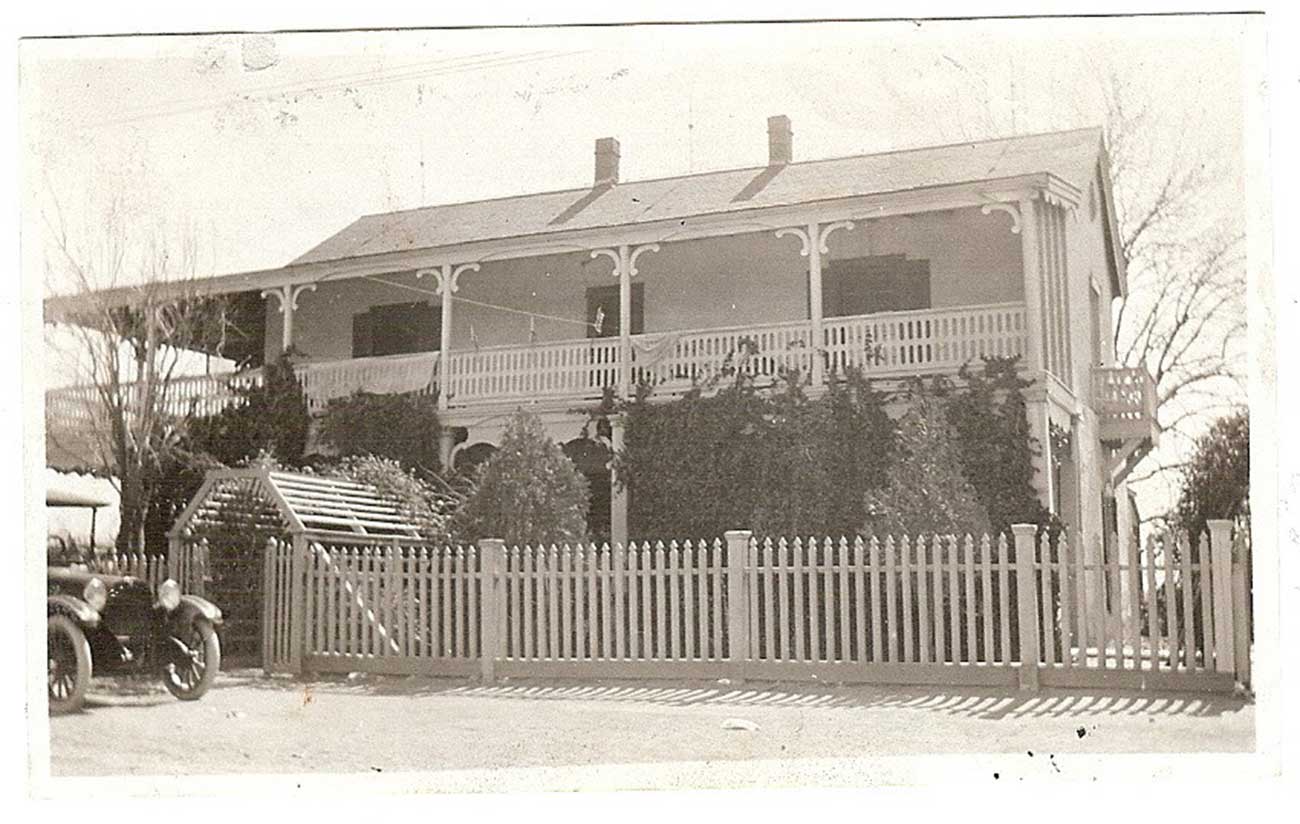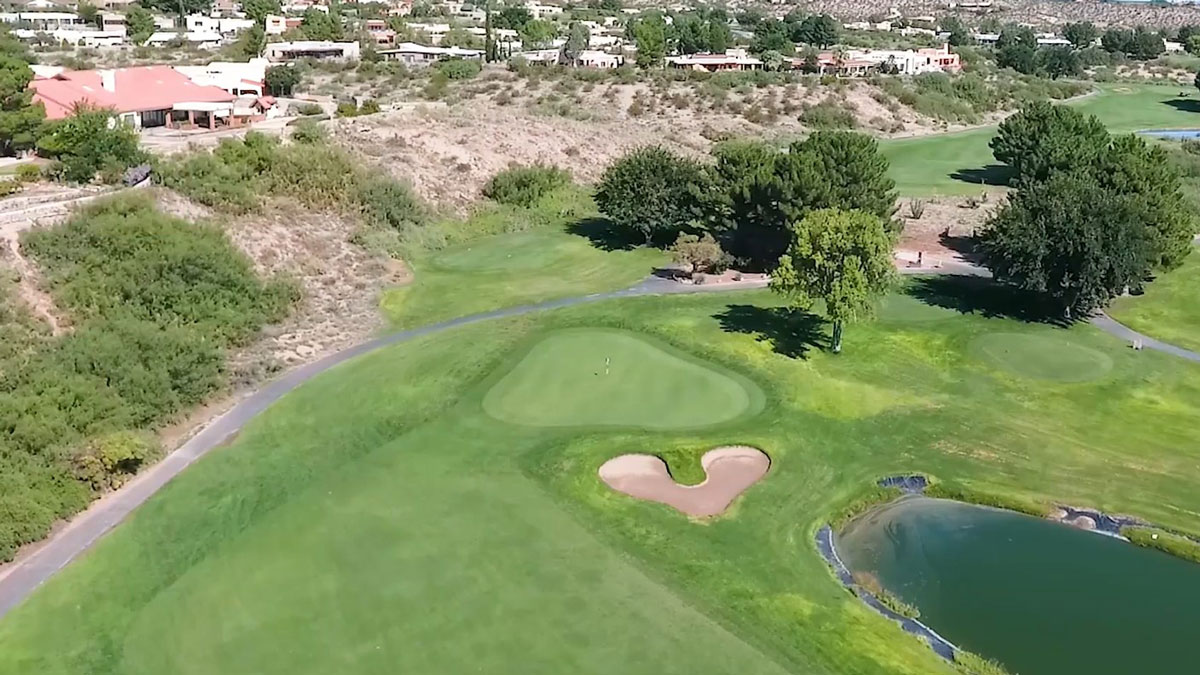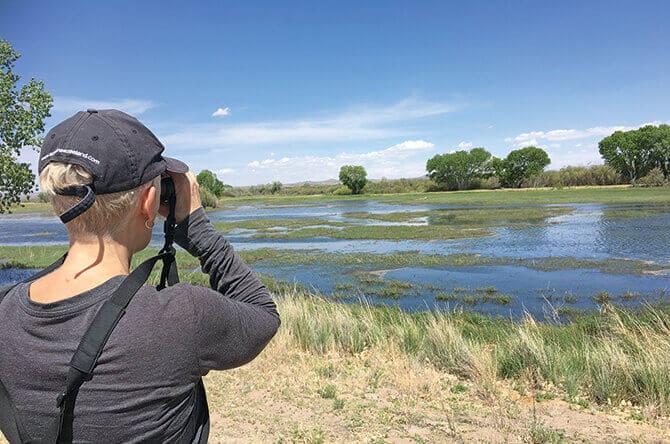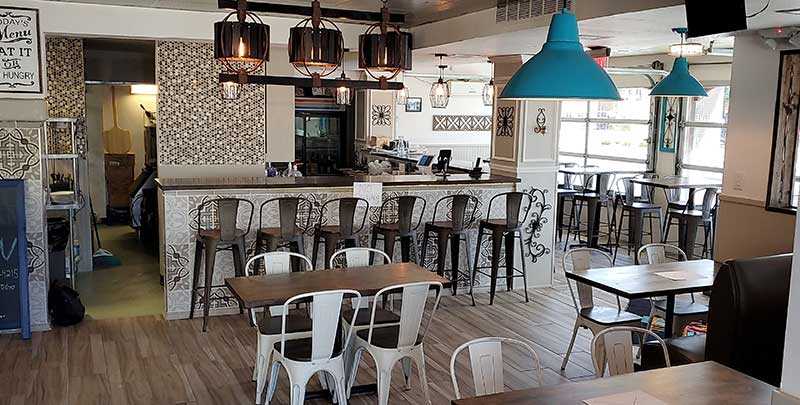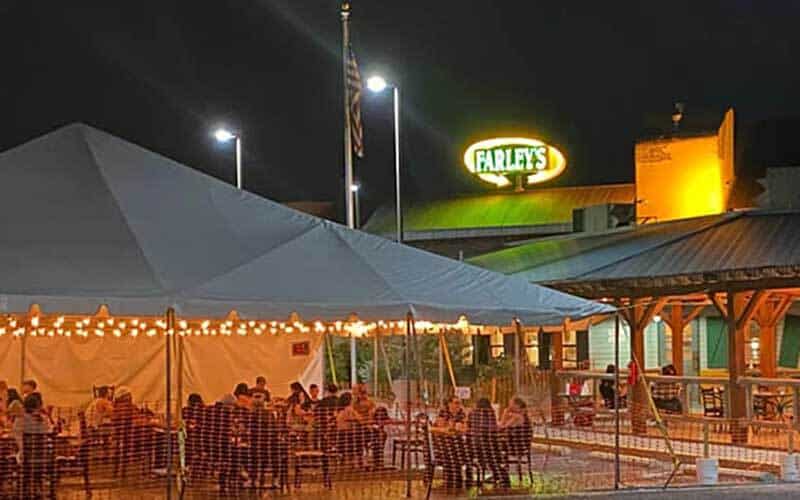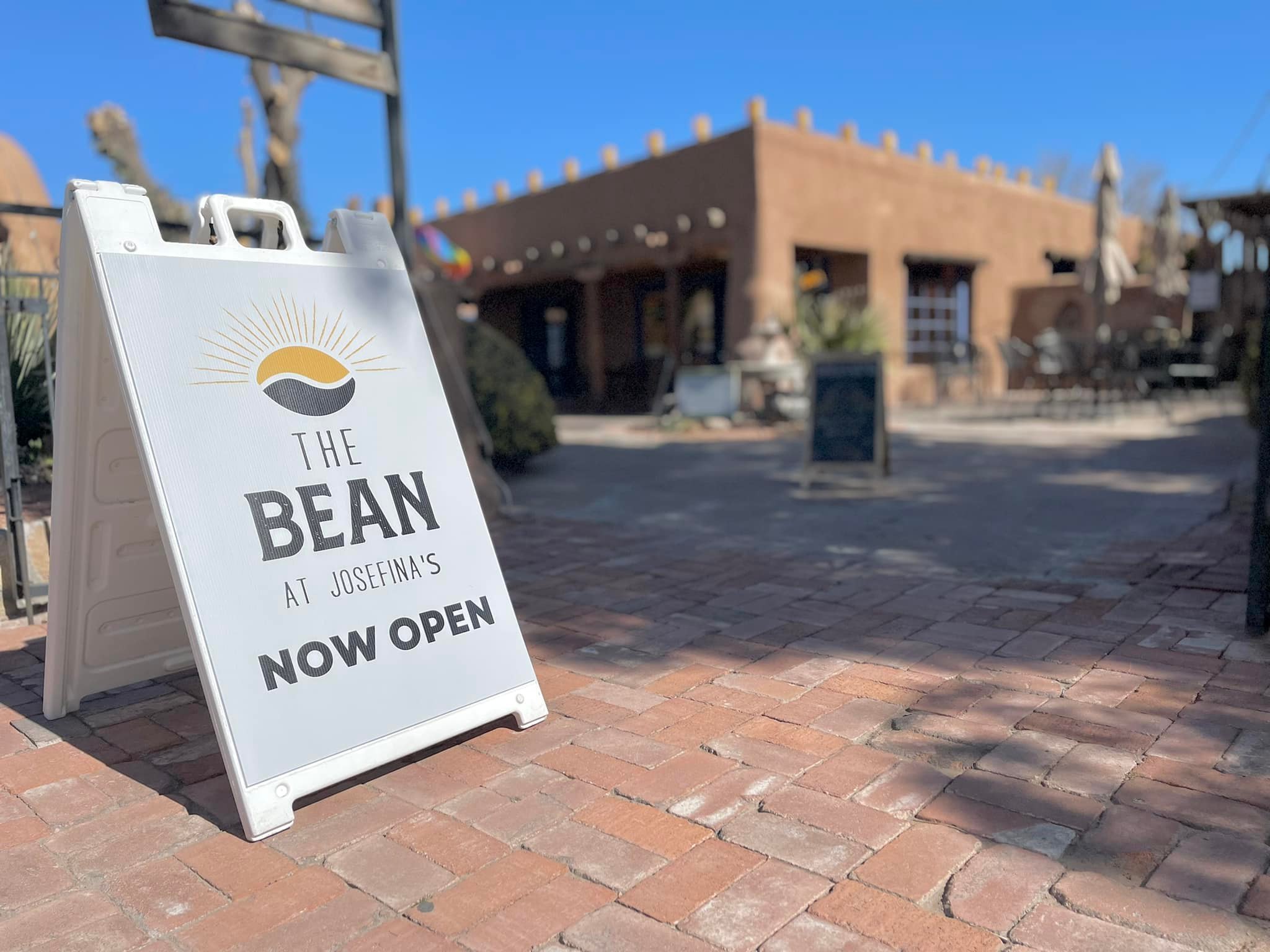The two-story, 19th century Nestor Armijo House rises like an anachronistic apparition from a sea of asphalt on one of Las Cruces’ busiest thoroughfares in the commercial district. Painstakingly restored in fits and starts over the past several years, the stately lime plaster-clad, adobe home built more than 150 years ago now houses the Greater Las Cruces Chamber of Commerce, which moved in 2017 after a six-month dash to complete the renovation project.
Property on National Register of Historic Places
The National Register historic property, constructed on the heels of the Civil War by Union Army veteran and merchant John D. Barncastle on what was then South Street (present-day E. Lohman Ave.) on the town’s outskirts, represents one of the oldest surviving Las Cruces residences from the horse-and-buggy era. Barncastle, who was married to the daughter of well-to-do Don Pablo Melendres, known as the “Father of Las Cruces,” would move out after two years.
Bradford Daily, a freighter, and wife, Mariosita Carreon, would live there until 1877, when Nestor and Josefa Armijo would purchase and make some modifications to the 4,374-square-foot residence. Their descendants, including Nestor’s granddaughter, Josephine, who inherited the house upon her grandfather’s death in 1911, would go on to live in the home until 1977.
Imagine what the denizens of the dusty desert town (founded in 1849), most of whom dwelled in jacals of mud and sticks, must have thought as the stately “mansion” made of plastered adobe and wrap-around timber porch and balcony rose from the hardscrabble countryside.
“The remarkable thing is that the home is in its original footprint,” says Eric Liefeld of Mesilla Valley Preservation Inc. who acted as a preservation advisor during the restoration project. “The Armijo House is atypical for adobe houses here both in style and construction. It’s amazing that the house survived with original windows, shutters, and porches.”
Renovating the armijo house
Eric, who became involved with the Armijo House shortly before the chamber inherited it in 2011 and began planning its rehabilitation, helped secure state and federal grants. Those monies paid for a structural engineering assessment of the home and helped bear some of the cost of the extensive woodwork restoration of windows, shutters, porches, and exterior gingerbread wood trim added by the Armijos to impart a Victorian look. Other funds for the home’s renovation came from the chamber’s Greater Las Cruces Heritage Foundation fundraisers, Armijo family descendants as far away as California, along with private donations and loans from Citizens, Century, First American, and Pioneer banks.
The total cost of the Armijo House restoration is believed to have exceeded $1 million. They plan an annual gala to help raise funds for ongoing maintenance.
Early repairs included stabilizing the home’s three-foot-thick adobe walls and repairing extensive structural damage that had accumulated over the last 150 years. This difficult, complex, and demanding work was conducted by local adobe preservation expert Pat Taylor, who was advised by professional engineers Dr. Fred Webster and Dr. Sonya Cooper, New Mexico State University associate dean of engineering. Work also included covering interior adobe with gypsum plaster and exterior adobe with lime plaster, replacing the cedar shake roof, and extensive restoration to the second-floor veranda’s flooring, posts, railings, and trim. Restored and reproduced wooden flooring was installed upstairs and downstairs.
The Heritage Foundation contracted with McGinley Construction as general contractor to complete the final phase of the home’s restoration. A team of 25 workers completed adobe repairs and plastered the walls, put in flooring, cleaned up original wood and replaced it, replicated damaged wood as needed, completed the downstairs bathroom, and oversaw much of the electrical and plumbing updates.
Kevin McGinley concedes he and his crew encountered a number of challenges unique to older properties, but says prior experience with renovations at La Posta and historical Mesilla Valley homes paid off. He estimates his subcontractors were able to reuse about 40 percent of the old flooring and roughly 80 percent of the trim board and woodwork.
“With an old house like this, we had to work around a lot of the old wood to try to maintain the historical integrity,” Kevin explains. “A lot of wood had to be pulled down and marked, and if it couldn’t be reused, it was duplicated.
“What was really cool,” he adds, “was that our team of subs had the highest respect for the home and took special interest in the property.”
Today, visitors to the historic home will experience the charm of yesteryear’s architectural flourishes — from original doors with gleaming porcelain handles, wood-framed windows, longleaf pine flooring, beaded board ceilings, and the Armijo Family’s original chandelier, which will be installed in the parlor. The room will exhibit Armijo Family artifacts and furniture, as well as a gallery of vintage family portraits.
Armijo House becomes home to the Chamber of Commerce
Debbi Moore, CEO and president of the Greater Las Cruces Chamber of Commerce [at the time the story was written], “One of the things I’ve learned is the power this house holds for the community.  People stop by with their children and recall how their grandmother had tea with Josephine, or they remember the smell of the rose garden, the orchard, and lilac bushes.”
People stop by with their children and recall how their grandmother had tea with Josephine, or they remember the smell of the rose garden, the orchard, and lilac bushes.”
Debbi oversees the chamber’s business from her upstairs corner office that was Armijo’s granddaughter Josephine’s bedroom. It features a vaulted ceiling that her grandfather Nestor had built to accommodate an 11-foot-tall brass bed he had shipped to the States from England, where he sometimes traveled as a freighter and fur trader. The bed is among more than 700 Armijo Family artifacts housed at the Branigan Cultural Center, some of which will be on loan to the Heritage Foundation for future display at the home.
Debbi says the home’s expansive central downstairs hallway will feature reproductions of historical family photos and a donors’ wall. In a nod to modern innovation, the home features energy-saving lighting and a handful of energy-efficient, freestanding air conditioning and heating units.
She proudly points out that the chamber’s occupation of the home continues the property’s historic link to Las Cruces commerce through Nestor’s service as the vice president of the organization’s predecessor, the Mesilla Valley Chamber of Commerce, founded in 1904. Since her arrival from Rancho Rios in May 2017, Debbi has come to appreciate what the home means to Las Crucens’ sense of history.
Plans are in the works to plant honeysuckle and other blooming shrubs, and to install a trellis like the one that once graced the front of the Armijo’s residence, at the side entrance from the parking lot. Benches will be installed in front of the house. The rear of the home will retain a commercial feel and will be used to host events.
Lots of people drop in, she says, to see the amazing transformation of the historical property that had been unoccupied since the 1980s and was slowly deteriorating. She is seeking volunteer docents to lead tours.
It’s understandable that the historic home means so much to the community, says preservationist Eric. “It’s more than just an old building because it lets us tell an important part of the story of Las Cruces,” he says. “What I find most compelling is that it represents our city’s blended culture.”
Greater Las Cruces Chamber of Commerce
1150 E. Lohman Ave.
Lascruces.org
McGinley Construction
mcginley-construction.com
Mesilla Valley Preservation Inc.
mvpres.org
Armijo House Timeline
1849 City of Las Cruces founded
1852 Doña Ana Country formed
1860 Mesilla population hits 2,000
1865 American Civil War ends
1866-67 Home built by John D. Barncastle on South Street (later called Convent Street due to the location of Loretto Academy (founded 1870)
1868 Home purchased by Bradford Daily
1877 Nestor Armijo buys what later becomes known as the Armijo House
1904 Nestor named VP of Mesilla Valley Chamber of Commerce
1911 Nestor passes away
1911-77 Home inherited by granddaughters Gertrude (Armijo) Ascarate and Josephine (Armijo) and Peter Gallagher
1969 Home placed on New Mexico State Register of Cultural Properties
1976 Armijo House added to the National Register of Historic Places
1977 Ownership transfers after Josephine’s death to Loretto Shopping Center owners
1982-91 Pioneer Savings and Trust renovates home as a bank branch
1991-2009 Citizens Bank leases out office space to various tenants
2011 Property donated to Greater Las Cruces Chamber of Commerce
2011 Discussions begin between Citizens Bank and Chamber about a restoration project to save the deteriorating home
2013 Extensive restoration under direction of Pat Taylor Inc. commences
2016 Chamber leadership makes completion of project a priority
2017 Restoration project concludes and Chamber moves into the home
Written by Rob McCorkle for Neighbors magazine
Historic photos courtesy Colligan family
Posted by LasCruces.com
